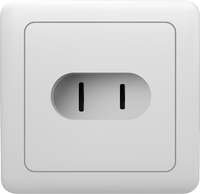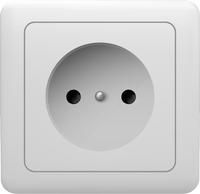Power Plugs and Sockets in South Korea - Do You Need an Adapter?
If you are travelling to South Korea 🇰🇷 from Bolivia 🇧🇴, then NO, you will not need an adapter.
In South Korea, the plug types used are A, B, C and F. The voltage is 110-220 V with a frequency of 60Hz. On the other hand, in Bolivia, the plug types used are A and C. The voltage in Bolivia is 220 V with a frequency of 50Hz.


Type A


Type B


Type C


Type F
✅ Your devices from Bolivia of type A and C will be valid and will work without an adapter.
⚠️ In South Korea there are two types of voltage: 110-220 V. Be careful with the voltage difference.
What are the plugs like in South Korea?
In South Korea, the predominant plug types are A, B, C and F. If you are coming from Bolivia, then your devices are of type A or C.
In this sense, you will not have any problems with your electronic devices, as the plugs in South Korea are compatible with the devices from Bolivia.
In South Korea, 110 volts are used in very old buildings with type A and B outlets. Types C and F are used for 220 volts. Type F is commonly found in offices, airports, hotels, and some luxury homes, whereas type C is used in most homes. The 220 volts are achieved with a two-phase 110V system (there is no neutral). Some residents install their own transformers and adapt their facilities to use 110V appliances imported from Japan or North America. Many hotels use only 220 volts, although a few offer both 110V (type A or B) and 220V (type C or F).
Do I need a voltage and frequency converter to travel to South Korea?
It is important to know that in South Korea the electrical voltage is 110-220 V, with a frequency of 60Hz. In Bolivia, the electrical voltage is 220 V and the frequency is 50Hz.
Due to the wide range of voltages used in South Korea, you will be able to use your devices from Bolivia, but you should always verify the voltage of the socket to which you are connecting your electrical device. Your chargers will work at 220 V, so you should connect them to sockets of that range.
- What are the plugs like in South Korea?
- Do I need a voltage and frequency converter to travel to South Korea?
-
Frequently Asked Questions
- Can I charge my iPhone or Android mobile device in South Korea?
- Can I plug in my laptop charger in South Korea?
- Can I use my hair dryer or straightener in South Korea?
- How do I know if my electrical device is dual voltage?
- What happens if I connect a 220 V device to a 110 V socket without an adapter?
- What happens if I connect a 50Hz device to a 60Hz socket without an adapter?
Frequently Asked Questions
Below we will answer some of the most common questions asked by travelers going to South Korea.
Can I charge my iPhone or Android mobile device in South Korea?
If you are travelling from Bolivia to South Korea, you will be able to charge your iPhone or Android mobile device without any problems. Nowadays, these devices are designed to work with wide ranges of voltage and frequency. Additionally, since both countries use compatible plug types, you will not need an adapter in South Korea to charge your iPhone or Android.
Can I plug in my laptop charger in South Korea?
If you are travelling from Bolivia to South Korea, you will be able to charge your laptop without any problems. Nowadays, laptops are designed to work with wide ranges of voltage and frequency. Additionally, since both countries use compatible plug types, you will not need an adapter in South Korea to charge your laptop.
Can I use my hair dryer or straightener in South Korea?
You will have to be careful when using your hair dryer or hair straightener in South Korea. These devices are not usually dual voltage, so you should pay attention to ensure that the voltage of the hair dryer/straightener is the same as the socket you are going to use. To be able to use these devices with peace of mind, we recommend that you purchase a voltage adapter.
How do I know if my electrical device is dual voltage?
To know if your electrical device is dual voltage, you must check the label or product specifications. If the label indicates a voltage range, such as 100~240V and a frequency range like 50~60Hz, then your device is dual voltage and can be used without any problems. If your device is not dual voltage, then you will need a voltage converter to be able to use it in sockets in South Korea with a different voltage than your device.

What happens if I connect a 220 V device to a 110 V socket without an adapter?
Under no circumstances should you attempt to connect a 220 V device from Bolivia to a 110 V socket in South Korea without a voltage adapter. Doing this poses a great danger and the device could cause a fire. Before travelling to South Korea, make sure you have a voltage adapter.
What happens if I connect a 50Hz device to a 60Hz socket without an adapter?
When connecting a 50Hz device to a 60Hz socket in South Korea without a frequency adapter, the worst that can happen is that the device may run at a faster speed than expected. Most electronic devices nowadays should not be damaged, but it is true that in older devices, the motors could heat up and risk being damaged.

Leave a Reply